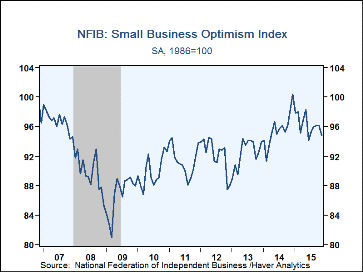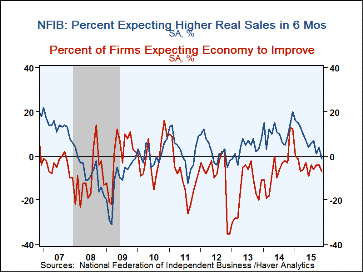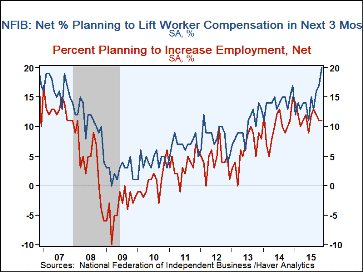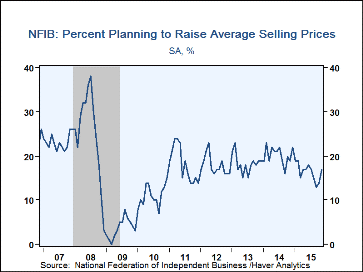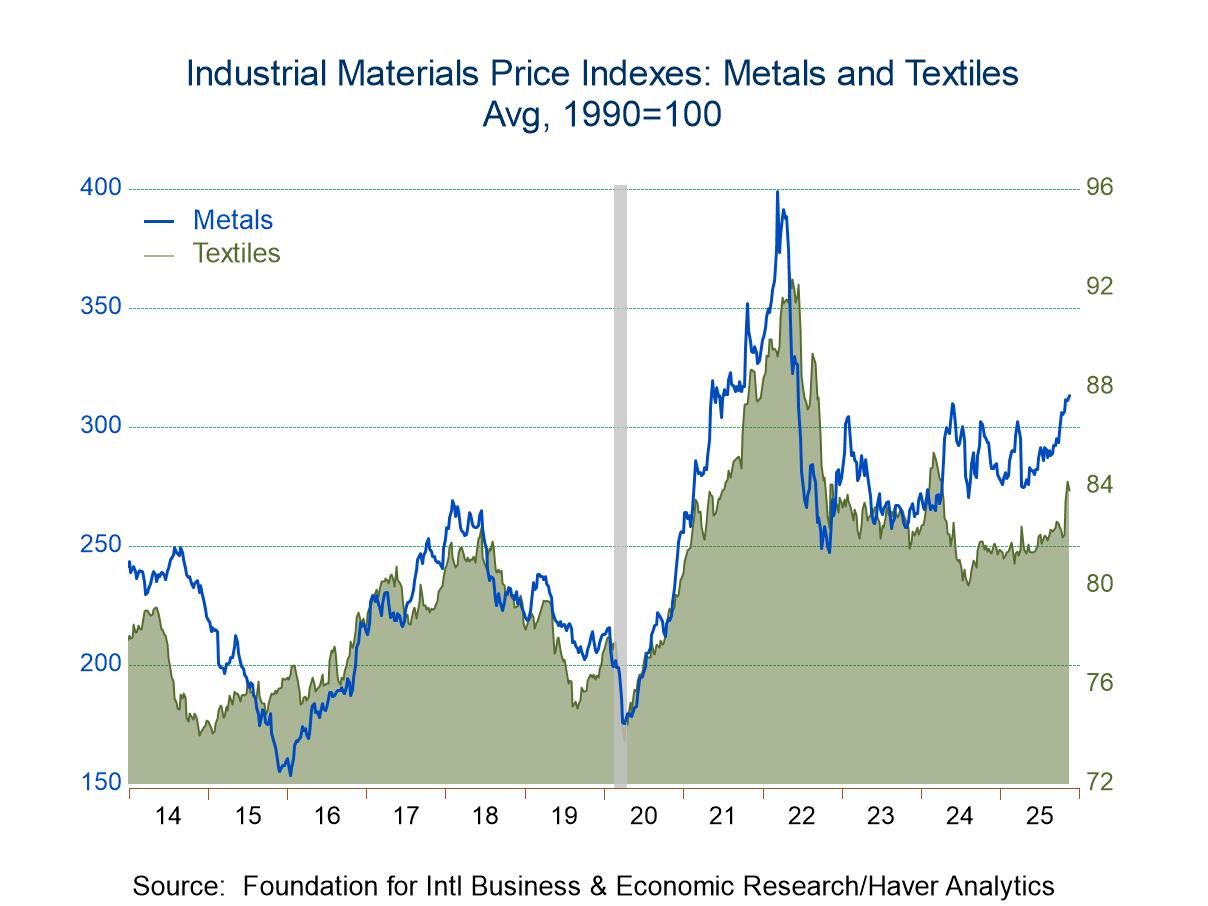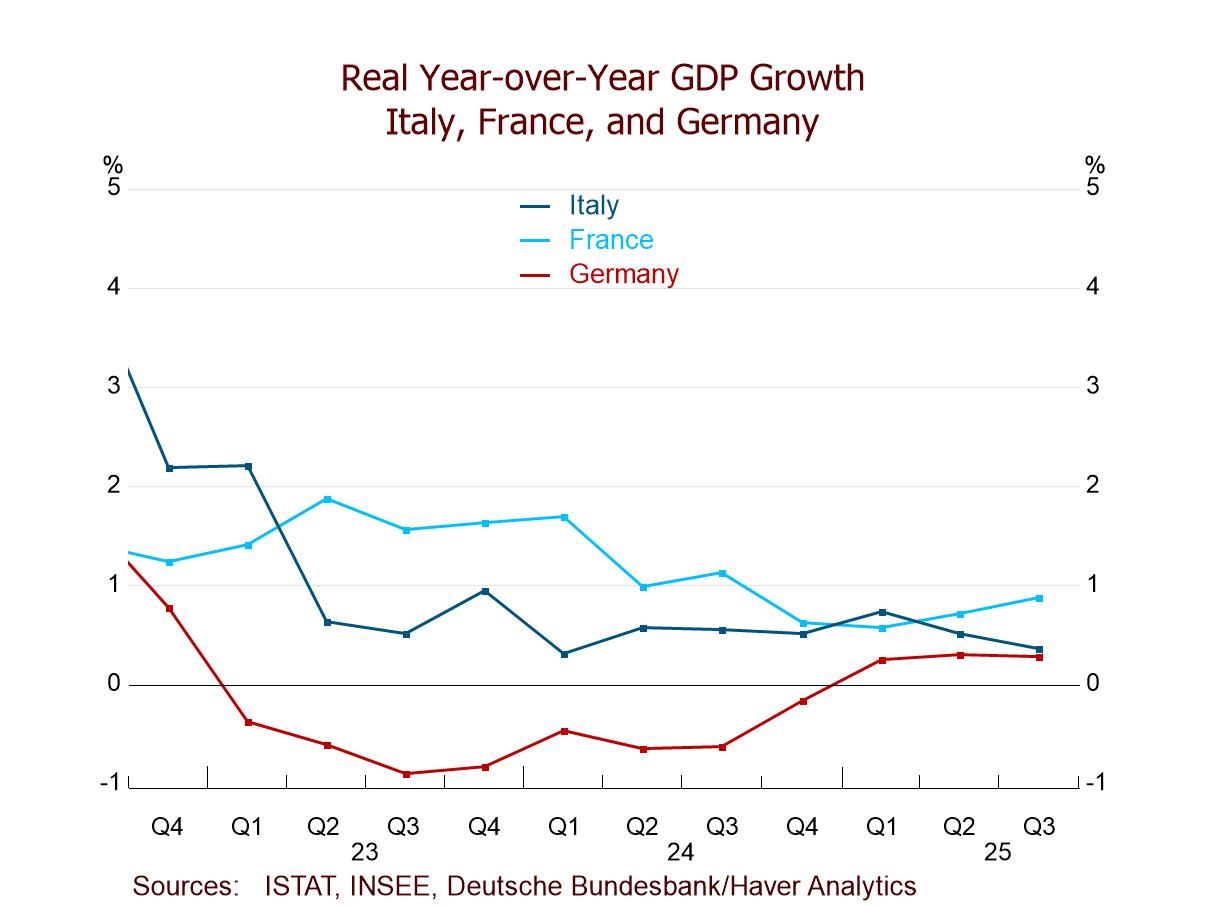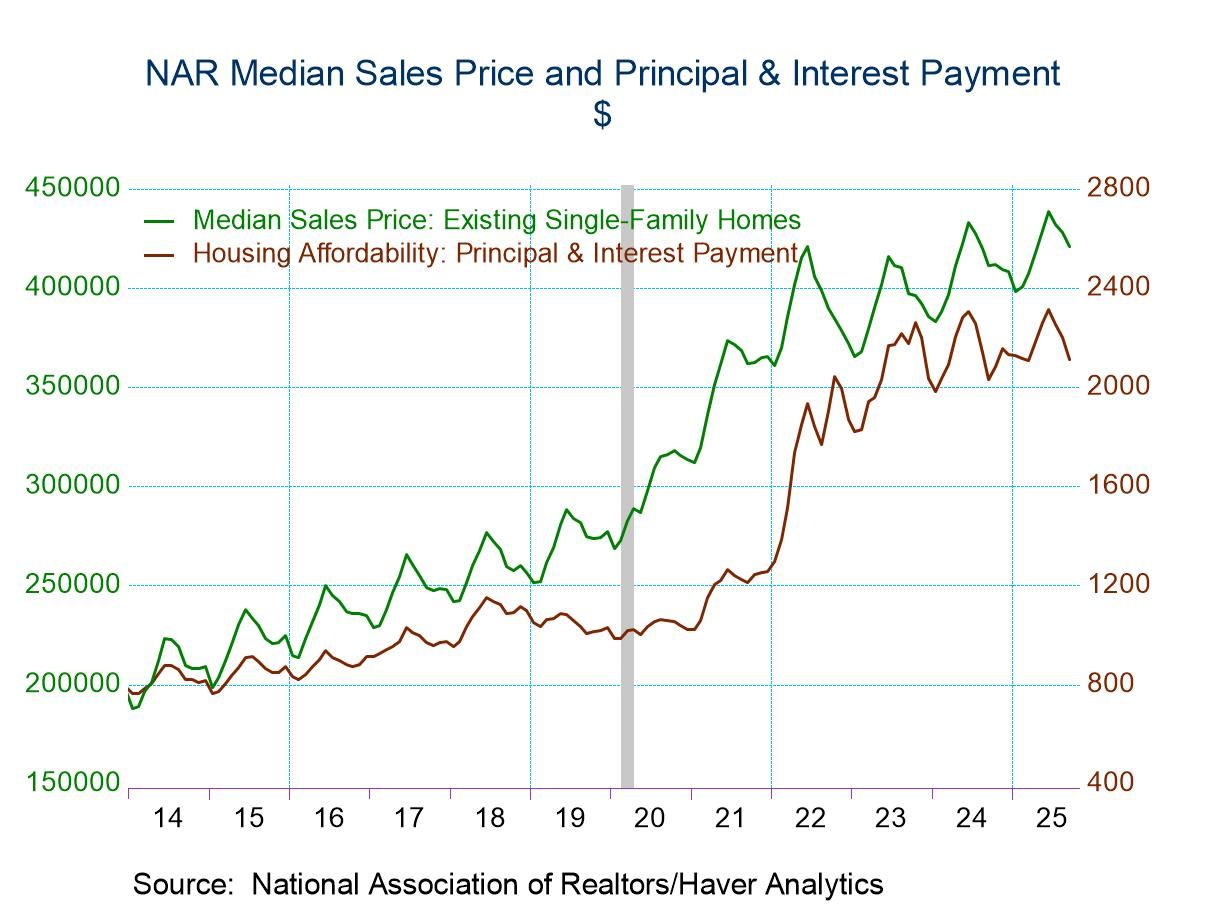 Global| Dec 08 2015
Global| Dec 08 2015U.S. Small Business Optimism Index Falls to Five-Month Low
by:Tom Moeller
|in:Economy in Brief
Summary
The National Federation of Independent Business reported that its Small Business Optimism Index declined 1.3 points during November to seasonally adjusted 94.8, the lowest level since June. The latest figure remained below the high of [...]
The National Federation of Independent Business reported that its Small Business Optimism Index declined 1.3 points during November to seasonally adjusted 94.8, the lowest level since June. The latest figure remained below the high of 100.4 in December. According to the NFIB, the October level also remained below the 42-year average of 98 and was consistent with economic growth of 2.5%.
The percentage of firms expecting higher real sales in six months fell to -1 and was in negative territory for the first time since March 2013. The percentage of firms expecting the economy to improve fell to -7, the lowest point since June. As for business activity, 12% of firms reported that now was a good time to expand the business, down from 13% in October. The reading remained in the range of the last twelve months.
The earlier labor shortage eased somewhat as 47% of respondents found few or no qualified candidates to fill job openings, down from last month's high of 48%. Twenty seven percent of firms had positions they were not able to fill right now which was stable with the prior two months. A steady 11% of firms expected to increase employment, but that was down from a 15% high at the end of last year. A higher net 23% of firms raised worker compensation over the last twelve months, but a greatly improved 20% were expecting to raise it in the next three months, the most since November 2006.
Small businesses ability to improve pricing remained limited. A slightly improved 3% of firms were raising prices, but that was down from 14% in July of last year. Expectations about the ability to raise prices improved. Seventeen percent of firms were planning to raise prices, the most since July.
Credit remained readily available as just 4% reported that it was difficult to get. It's been near that level for roughly a year. Thirty two percent of firms felt satisfied that their borrowing needs had been filled in the last three months, down from 35% March.
A reduced 21% reported government requirements as the largest single problem and a diminished 20% were troubled most by taxes, lower than a high of 27% in December. An increased 15% were challenged by the quality of labor. A raised 10% reported insurance cost and availability as the largest problem, but a much lower 9% indicated poor sales as their biggest problem, the lowest since early in the recession. A slightly higher 8 percent reported competition from large businesses as the biggest problem. A lower 5% reported the cost of labor was a big problem. It's been near that level since early in 2013 and inflation was indicated by only 1%, the least since 2003.
Roughly 24 million small businesses exist in the U.S. and they create 80% of all new jobs. The typical NFIB member employs 10 people and reports gross sales of about $500,000 a year. The NFIB figures can be found in Haver's SURVEYS database.
| National Federation of Independent Business | Nov | Oct | Sep | Nov'14 | 2014 | 2013 | 2012 |
|---|---|---|---|---|---|---|---|
| Small Business Optimism Index (SA, 1986=100) | 94.8 | 96.1 | 96.1 | 98.1 | 95.6 | 92.4 | 92.2 |
| Firms Reporting Now is a Good Time To Expand the Business | 12 | 13 | 12 | 11 | 10 | 7 | 7 |
| Firms Expecting Higher Real Sales In Six Months (SA, Net %) | -1 | 4 | 1 | 14 | 11 | 4 | 2 |
| Firms Expecting Economy To Improve (SA, Net %) | -7 | -4 | -4 | 13 | -5 | -15 | -9 |
| Firms Planning to Increase Employment (SA, Net %) | 11 | 11 | 12 | 11 | 10 | 6 | 4 |
| Firms With Few or No Qualified Applicants For Job Openings (SA, %) | 47 | 48 | 45 | 45 | 43 | 39 | 35 |
| Firms Reporting That Credit Was Harder To Get (SA, Net %) | 4 | 3 | 4 | 5 | 6 | 6 | 8 |
| Firms Raising Average Selling Prices (SA, Net %) | 3 | 2 | 1 | 4 | 8 | 2 | 4 |
Tom Moeller
AuthorMore in Author Profile »Prior to joining Haver Analytics in 2000, Mr. Moeller worked as the Economist at Chancellor Capital Management from 1985 to 1999. There, he developed comprehensive economic forecasts and interpreted economic data for equity and fixed income portfolio managers. Also at Chancellor, Mr. Moeller worked as an equity analyst and was responsible for researching and rating companies in the economically sensitive automobile and housing industries for investment in Chancellor’s equity portfolio. Prior to joining Chancellor, Mr. Moeller was an Economist at Citibank from 1979 to 1984. He also analyzed pricing behavior in the metals industry for the Council on Wage and Price Stability in Washington, D.C. In 1999, Mr. Moeller received the award for most accurate forecast from the Forecasters' Club of New York. From 1990 to 1992 he was President of the New York Association for Business Economists. Mr. Moeller earned an M.B.A. in Finance from Fordham University, where he graduated in 1987. He holds a Bachelor of Arts in Economics from George Washington University.


